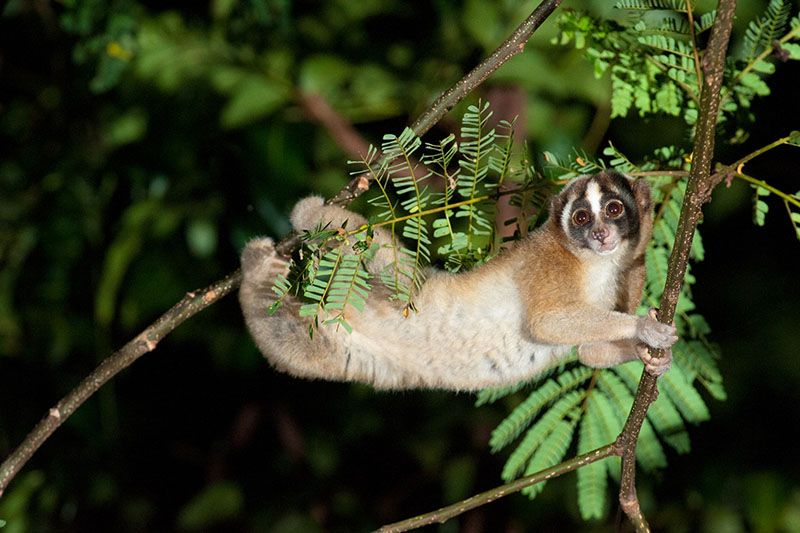In Western Java our Conservation Partner, Anna Nekaris, has been learning more about slow lorises. Slow lorises are one of the few mammals around the world that have a toxic bite. Other venomous species include solenodons: long-snouted, golden, burrowing creatures and water shrews: tiny, dark divers.
Studying play
Many young animals learn life skills through playing with other individuals. These bouts of play give juveniles a chance to master techniques they will need as adults. Skills in developing use of weapons such as tusks and antlers during play have been well-documented in many animals, but play in venomous animals hasn’t been well studied yet. Anna and her team have spent almost ten years following and watching Javan slow lorises in the wild, documenting their behaviour. In that time they’ve seen over 660 play ‘events’. They’ve looked at the postures that young lorises use when they’re playing and who they play with.

Play for preparation
Interestingly it appears that young slow lorises choose to play with older, more experienced lorises most of the time – even when they have siblings nearby to play with. Is this because they have an opportunity to learn from the adults? Anna thinks this could be the case. She suggests that play gives young lorises an opportunity to train to deal with future, unexpected events, such as random attacks from other lorises. When playing, the young lorises took greater risks, using more strenuous postures and playing in riskier conditions such as increased rain and moonlight. The play patterns in immature lorises bore a striking resemblance to venom postures used by adults.
Slow lorises are highly territorial and they use their venom against other lorises. Males, which use their venom to defend reproductive females, tend to have many more venomous wounds than females. However female lorises also use their venom to protect their feeding and nesting sites. It certainly seems that young lorises are using play fighting to train for later encounters.
Thank you for helping us fund this research to protect slow lorises in Java.
If you’d like to support this work, please donate or set up a direct debit here today.
Find out more about our work to protect slow lorises in Java:
